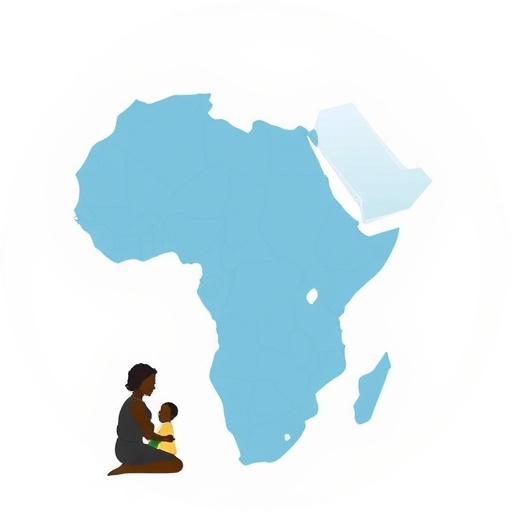Title: Navigating the Intersection of Family Structures and Adolescent Development: Insights from Africa and Asia
Recent research has highlighted a binding relationship between familial environments and critical milestones in adolescent development across continents, particularly in Africa and Asia. With the rapid changes in social norms, economic conditions, and healthcare opportunities, understanding how family dynamics influence key aspects like sexual debut and motherhood proves essential for policymakers and communities alike. This exploration delves into significant revelations from the research conducted by Singh, Rahut, and Sonobe, shedding light on these complex interactions.
Understanding the connection between family structure and adolescent behavior is vital, particularly in regions where traditional familial arrangements predominantly influence youth experiences. This study scrutinizes how factors like orphanhood and family composition interplay with adolescents’ decisions regarding their sexual health and motherhood. Given the global rise of issues impacting youth, such as the prevalence of teenage pregnancies, scholars reveal that family dynamics can either enhance or impair youth’s outlook toward their future.
When examining family structures, it is essential to consider how variations—nuclear versus extended families, single-parent households, and orphaned conditions—affect mental health and risk-taking behaviors amongst adolescents. The study underscores that young individuals raised in stable family systems are more likely to delay sexual debut and make informed decisions regarding motherhood. Conversely, those in less supportive environments often face pressures that can accelerate these life events, indicating a direct correlation between environment and choices.
Adding to this discussion, the concept of orphanhood presents unique challenges that can lead to vulnerability and increased risk of early sexual debut among adolescents. Orphaned youth might lack emotional and economic support, driving them to seek validation and affection in dangerous circumstances. The research indicates that vulnerable cohorts often face societal discrimination, which complicates their pathways to healthy relationships and reproductive health education.
Moreover, the ramifications of early sexual activity extend far beyond individual experiences; they ripple through communities and societies at large. Young mothers face heightened risks of health complications and greater societal stigma, which perpetuates cycles of poverty and disempowerment. The findings of the study suggest that addressing these multifaceted issues requires integrated approaches involving family support, community outreach, and education initiatives aimed at both youths and their families.
A pivotal aspect of the research lies in understanding how cultural norms surrounding motherhood shape adolescent behaviors. In some communities, early marriage and motherhood are socially accepted, directly influencing beliefs about sexual activity. The findings reveal that in regions where these norms are pronounced, adolescents may feel pressure to conform, which can lead to premature sexual experiences and subsequent pregnancies. Counter to this belief, nurturing relationships and educational interventions can reshape these narratives, fostering environments where youths make empowering choices.
Educational interventions have emerged as a key factor in altering trajectories for adolescents. Comprehensive sexual education that includes open discussions about relationships, consent, and reproductive health is paramount. The study postulates that a shift towards inclusive and robust education systems can significantly reduce early pregnancies and sexually transmitted infections. Communities that adopt a proactive stance towards educating youth are witnessing a positive transformation in behaviors, highlighting that informed youths are more likely to postpone sexual activities and make empowered choices.
Additionally, paternal involvement in adolescent life surfaces as a critical element. In many traditional setups, parental figures, particularly fathers, often provide insight and guidance that shapes the decision-making processes of their children. Through creating open communication lines and demonstrating supportive behaviors, fathers can decrease risks relating to early sexual behavior and motherhood. The absence of such frameworks often results in youth resorting to less healthy relationships for emotional support.
Research findings further emphasize the role of peers and community structures in guiding adolescent behavior. The influence of peer groups can simultaneously present risks and benefits. While peers can promote premature sexual activity, they can also serve as channels for advocating positive behaviors. When communities rally to support adolescent health—through mentorship programs, peer-led workshops, or community health initiatives—youths experience a profound shift towards healthier choices.
As the discussion unfolds, it becomes increasingly apparent that policy implications arise from these findings. Governments and NGOs must recognize the importance of addressing family dynamics and their repercussions on youth behaviors. Programs aimed at supporting families, especially those categorized as ‘at-risk,’ should encompass awareness and education on sexual health. Investment in family counselling and community resilience can produce far-reaching benefits for youths grappling with issues of orphanhood and early motherhood.
On a broader scale, the intersection of culture, socio-economic status, and education cannot be overlooked. These factors often determine the accessibility of information and resources available to adolescents. Communities with limited access to health services may witness higher rates of teenage pregnancies and sexual-related complications. Addressing these disparities is crucial to ensuring equitable healthcare and educational resources for all adolescents.
The research conducted in this study serves as a crucial reminder of the interconnectedness of family, community, and individual agency in shaping the narratives of youth. By fostering environments where adolescence can thrive and make informed choices about their lives, societies are not only investing in the future of their youth but also in the health and stability of their communities.
Ultimately, unearthing the complexities of adolescent development requires a comprehensive understanding of all influencing factors. As societies evolve, continued research into familial influence on adolescent choices will remain integral to crafting sensitive and effective policies that support the next generation.
Subject of Research: The relationship between family structure, orphanhood, adolescent sexual debut, and motherhood.
Article Title: Family structure, orphanhood, and adolescent sexual debut and motherhood: evidence from Africa and Asia
Article References:
Singh, A., Rahut, D., Sonobe, T. et al. Family structure, orphanhood, and adolescent sexual debut and motherhood: evidence from Africa and Asia.
J Pop Research 43, 1 (2026). https://doi.org/10.1007/s12546-025-09409-7
Image Credits: AI Generated
DOI: https://doi.org/10.1007/s12546-025-09409-7
Keywords: Family structure, orphanhood, adolescent sexual behavior, motherhood, Africa, Asia, youth development, societal norms, education.




